Simple rules for planting a buzulnik and caring for him
In central Russia, not spoiled by cloudless months, the eyes are looking for a bright, juicy, lively. Buzulnik, planting and caring for which a novice gardener can handle, will be very helpful. Yellow-orange baskets with petals diverging, as children draw the sun, immediately cheer up.
History
The homeland of the buzulnik is Southwestern China, it is there that there are most wild species. In Russia, on marshy meadows, near streams and lakes, Siberian Buzulnik grows - a tall plant with lush tassels of yellow-brown color.
The Latin name of the plant is ligularia, from the Latin ligul it is the tongue. The inflorescence-basket consists of tightly packed petals with rounded edges, which are rolled up like small tongues.
Serious selection began in the early 20th century. New varieties appear every year, and recently varieties with leaves of different shapes and colors have been obtained. The Japanese have long preferred leaves to flowers and cultivated unique green gardens.
Varieties for the middle lane
If you look at the buzulnik varieties planted nearby, it seems that these are completely different flowers. One plant barely reaches the knee, the other is as tall as a man. The leaves are light green and purple, large and small. The flowers are yellow, orange, brown, and the inflorescences hang in bunches, branch out in a panicle or rise with an ear.
We usually plant two types: Przewalski's buzulnik and toothed buzulnik.
The brainchild of endless Mongolian and Chinese plateaus, long known in the homeland as a medicinal plant, Przewalski's buzulnik rises two meters due to the narrow half-meter inflorescences-ears. There are two varieties - Klenolistny and Raketa. The buds at the top of the peduncle look like a rocket taking off with the fire of nozzles in the form of opened flowers.
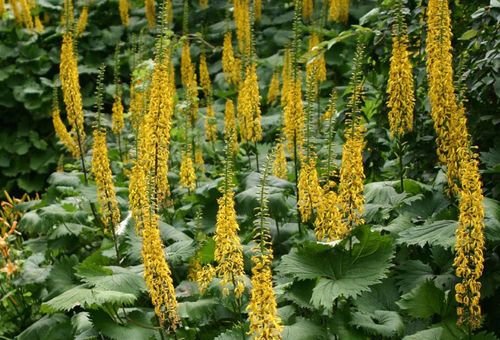
Buzulnik toothed is a fertile field for selection. The most famous varieties are Britt Marie Crawford, Othello, Desdemona, Osiris.
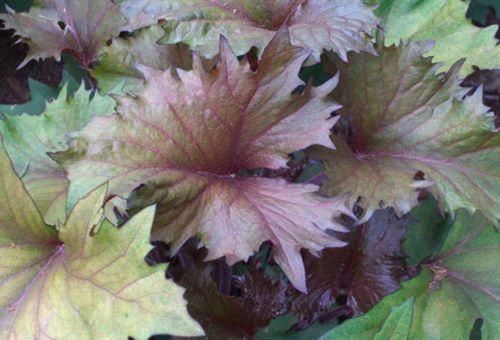
Buzulnik Britt Marie Crawford cannot be overlooked. Large burgundy leaves with a purple underside shine, bright yellow flowers the size of a palm sway. Flowers may have a brown basket. The stems reach a meter in height, inflorescences rise above them throughout the second half of summer. By autumn, the leaves turn dark purple.
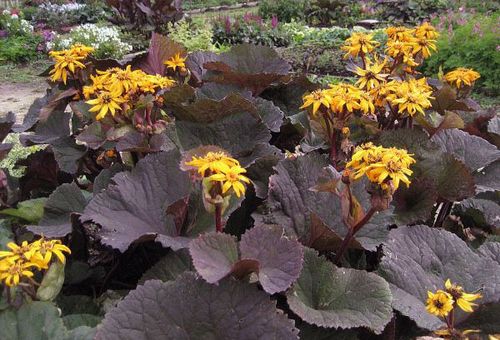
Buzulnik Othello and Buzulnik Desdemona. Inseparable in literature, these two characters create a suitable image in colors. The Othello variety has large, up to half a meter, leaves-blades of the color of bottle glass.
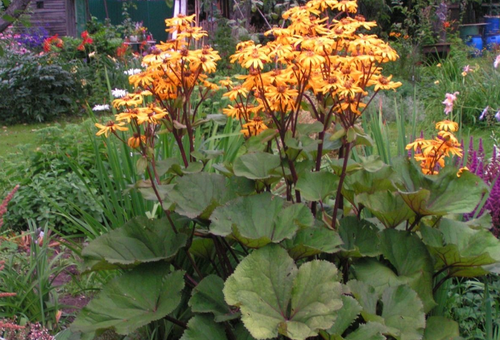
On the reverse side, the leaves are reddish and veined, similar to blood vessels. Over the brutal mass of greenery, tangerine flowers rise touchingly, personifying the anger and love of the great Moor. The Desdemona variety has a bright contrast between the sides of the leaf: from light green with a bronze tint on the outside to purple-brown on the back.
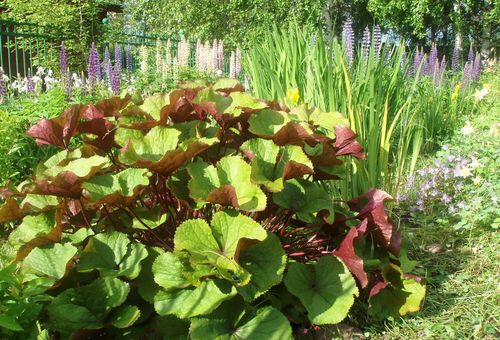
A Canadian florist Serge Fafar is working on the development of new varieties of buzulnik from the Osiris series. These are compact or even dwarf varieties up to 50 cm, blooming in the middle of summer. The breeder pays special attention to the leaves. Bozulnik Osiris Fantasy they are leathery, dense, with burgundy lining. The variety Cafe Noir has dark olive with cloves. The variegated varieties from the Osiris series are good without flowering.
Where to plant
Buzulnik loves shade - this is the main requirement for the landing site. Tall varieties can be planted near walls, compost heaps, in the background of flower beds.The plant looks worthy alone among the trees.
Planting low-growing species on the shaded side of the reservoir will ease the problem of constant watering. The plant can take root on any soil, but it will grow luxuriantly and bloom brightly in fertilized fertile soil.
Tip: If the soil is clayey and poor, you need to put humus in the hole before planting.
Care and feeding
In the spring, when growth begins, it is advisable to gently loosen and mulch the area with seedlings. In the summer, you need to remember the rule: the more sun, the more often you water.
The stalks of the plant are resilient and strong, but during flowering, especially in a windy place, a garter may be required. Pruning flowers and leaves should be pruned. The plant will become more attractive if young leaves appear and new flowers bloom.
Until August, caring for a buzulnik can be reduced to one feeding with mineral fertilizers or a 1:10 mullein solution. For this, it is better to choose a period when the difference between day and night temperatures becomes small. In the fall, humus can be introduced into the soil, half a bucket per bush, avoiding getting on the roots.
Nature has endowed the buzulnik with resistance to diseases. There are three enemies of the plant in a warm, damp place:
- slugs;
- snails;
- powdery mildew.
You can protect yourself from slugs by scattering granular superphosphate or setting traps under the plant. If snails appear, you need to check the inside of the leaf more often. Spraying helps with powdery mildew. For the solution, you can use a solution of potassium permanganate (10 liters 2.5 g) or colloidal sulfur in the old fashioned way, but it is better to use a modern, safe drug from a specialized store.
Wintering
When the plant fades, the aerial part is cut off. Buzulnik is winter-hardy, hibernates under a snow blanket without problems. But frosts in winters with little snow are dangerous. An artificial blanket with a layer of 3 cm or more made of mulch, a mixture of earth with compost, peat or humus will save the wintering plant.
Mulching is necessary because in most perennials, the buds from which shoots will appear grow. They can suffer from frost because they rise above the soil level.
Reproduction
In the spring, new rosettes form from the roots. According to experts, vegetative reproduction is best done in the spring, when the healing process is easier, and not in the fall. You need to wait for young leaves to hatch from the ground. Then, with a shovel, cut off part of the plant and dig it up. Fill and water the hole. The cut off part can be left as is, can be washed and cut according to the number of growth buds.
Process the sections with potassium permanganate or crushed coal. For planting, dig holes 40 by 40 cm at a distance of a meter and a half from each other. Add humus, some ash and superphosphate to the pits. When planting, the buds should be close - 3-5 cm from the surface. Already next summer, the seated part will take on a decorative look.
Planting with seeds can be done in different ways:
- in spring in moist soil to a centimeter depth;
- deep autumn into the ground so that the seeds undergo natural stratification;
- seedlings, with planting seeds in the spring and planting in the ground after the last frost.
From planting with seeds to the beginning of flowering, it takes 4-5 years.
A plant for all seasons
When planning flower beds and paths, there are always several uncomfortable, shaded places, and here the buzulnik will come to the rescue. Planting it will solve the problem of shady and damp corners of the garden.
In early spring, tight plum-colored shoots and unfolding leaves will remind you of the coming warmth and strength of life. Bright flowers over juicy leaves will delight all summer in any weather. Fresh bouquets of cut Buzulnik flowers cost 10 days. In autumn, the leaves that have changed color will decorate the flower garden. And in winter, dry inflorescences in a bouquet will remind you of the coming summer, when the sunny island of blooming buzulnik will again illuminate the garden with light.
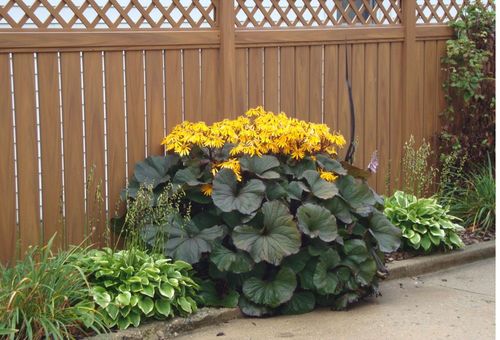
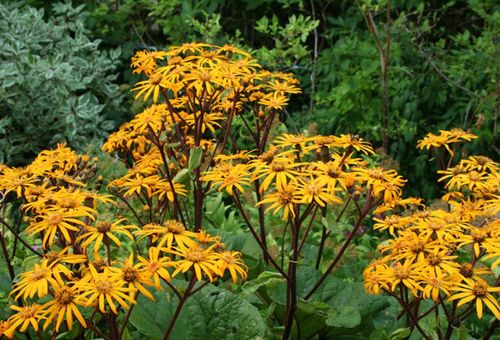
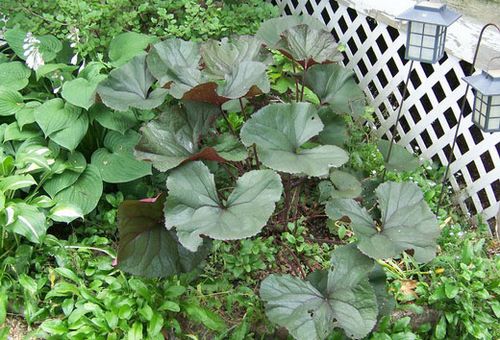
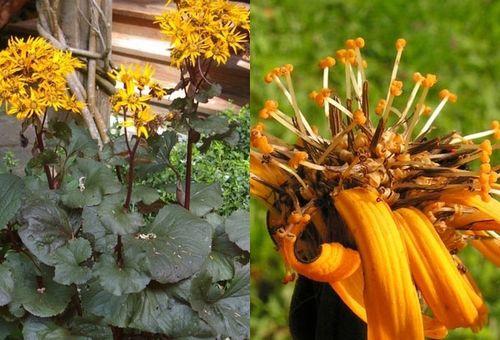

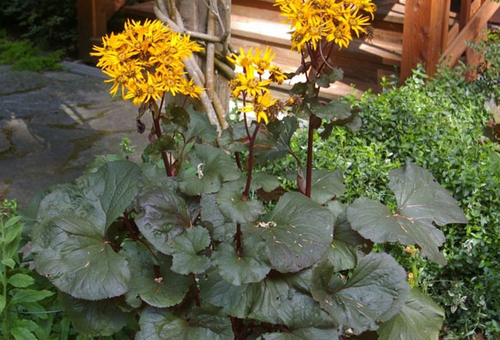


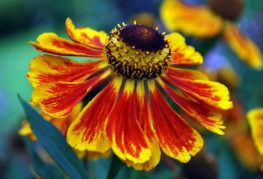


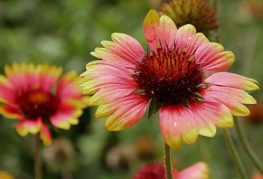
and will be published shortly.